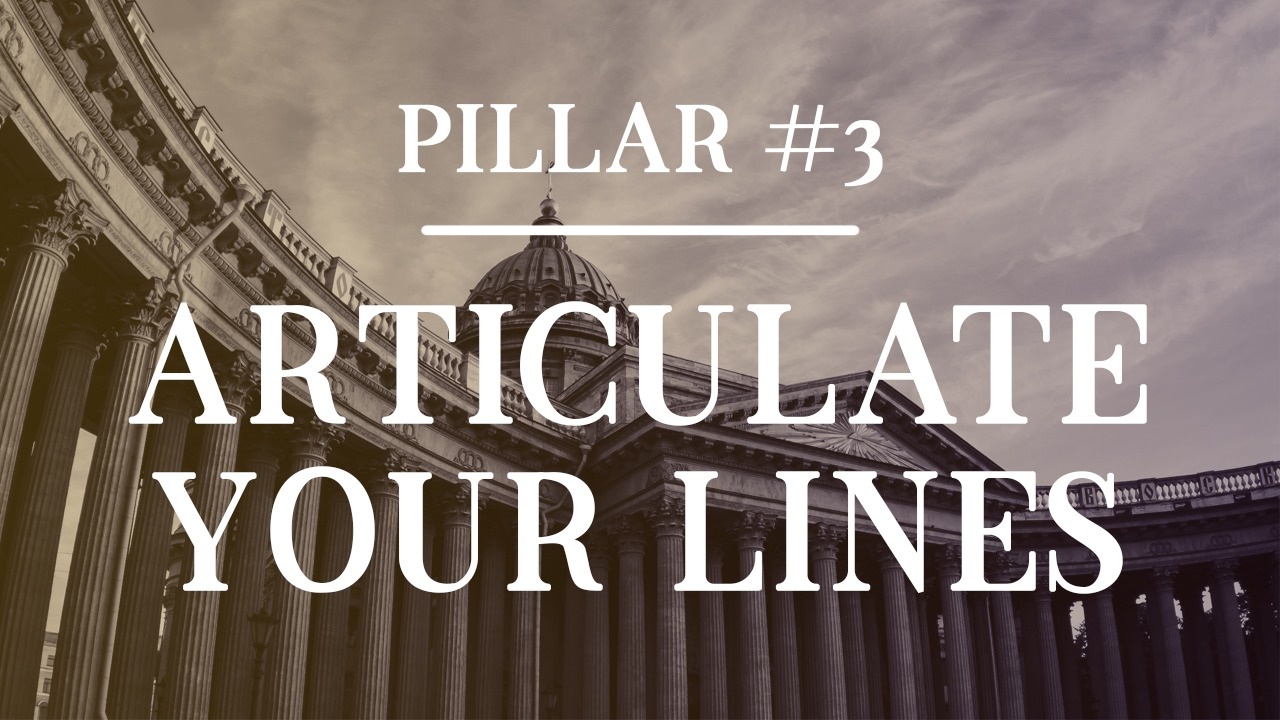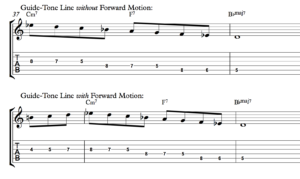
Jazz Improvisation Pillar #3: Articulate Your Lines
Oct 28, 2017The Final Jazz Guitar Improv Frontier: Control Timing with Your Soloing Lines
This post is the final entry in our Jazz Improvisation Pillar series. In this post, we are going to give you tips to articulate lines when improvising in a jazz context. Before reading the post, be sure to download the accompanying PDF to have the full examples.
"Jazz Improvisation Pillar #3" Exercises on Tune Up PDF
Join our Community here.
Re-Cap of the First Two Pillars
As you remember, the first jazz improvisation pillar is "Define the sandbox". Defining the sandbox means that you have to be able to play 100% correct notes at all time in your improvisation. That's the basis of your improv journey. There are many tools and exercises you can find to help you master this first pillar. I do not think I need to say this, but I still will: do not overlook this one!
The second jazz improvisation is: "Connect chords logically". This is a logical (no pun intended) follow-up to our first pillar. Nothing is more pleasing to the ear than jazz lines that outline the chord progression. What is the magic trick? Learn about the motions between the chords in your progression and embellish them. The most common motion is going from the 7th of a chord to the 3rd of the next chord.
The Third Pillar
So why are we revising the previous pillar you may ask? Pillar #1 is a no-brainer but is very important. As of Pillar #2, it's a natural follow-up but here is the twist: when you are applying the second pillar, you must still have pillar #1 in mind.
Guess what you need to have in mind when applying Pillar #3? Yes. Pillar #2 (which includes Pillar #1). Oh boy! Are you ready? Good!
What is the ultimate aim?
In a few words, Pillar #3 consists of always knowing where you are in the form. In order to articulate lines in a tasty fashion, you must master the beats, bars and bar lines. With those skills, you will have no trouble beginning and ending phrases at any point in the bar or form. That's what you need to aim for!
So the ultimate goal for "third pillar mastery" we could say is this:
Have the ability to start and end your musical phrases at any point during the bar, or the form of a song, while still applying Pillars #1 and #2
Tips For The Third Pillar
So, "always know where you are in the form" is pretty vague, right? You understood that this means that you have to put a great deal of effort in working out your timing and rhythm. To help you further, here are 3 tips you apply right now to your improvisation to articulate lines like a pro!
Tip #1: Displaced Enclosures
What is an enclosure? An enclosure is an approach to targeting specific notes of a new chord. There are several rules to construct an enclosure. Here are some examples of enclosures.

As you can see here we are simply leading the way to the 3rd of the chord to land on the first beat. There are many ways to construct such lines.
What does all this have to do with pillar #3? Glad you asked! Once you have a good grasp of enclosures, the real fun begins when you decide to displace it. You can find this in the PDF sheet music for this post.
In order to apply Pillar #3, we need to play around the timing and the rhythm. The next thing you shall do is playing the same examples above but start the enclosures half a beat earlier. It is easy to say, but trust me, it is not an easy task!
Tips #2: Add Pickups
As we established in the previous tip, the usual location to play your target notes are beat 1 and 3. That's (almost) the established rule. Though, don't you find it boring if all of your lines begin on the same beats? Yup. And that is not very Pillar #3.
One way you can articulate your lines in a less boring way is to add a pick-up sequence. A pickup consists of playing (usually) 3 eight notes before your target note. This will add what we call Forward Motion to your line and you will have to think about what you want to play ahead of time.
Pick-ups are a great way to articulate lines and give them a sense of fluidity rather than a square-y shape. Compare these two for example:

The first example is a good respectable line but it doesn't bring anything exciting to the table. That being said, the second one starts with a little pick-up to "set the mood" and start the actual line with a bang! Try it out, you will not regret it!
Tips 3: Leave Space
Articulate your lines doesn't mean that you need to play an endless stream of notes in your improvisation. The best jazz musicians that are renowned for their improvisation often leave space between notes.
Take Miles Davis for example. Miles waited. If you listen to songs he performed on record, like "Autumn Leaves", you will notice how much Miles Davis tested our patience by waiting at the very last moment to resolve notes. Miles' solo is transcribed in this PDF here . This is another feat of a jazz musician who mastered time and rhythm.
"Jazz Improvisation Pillar #3" Exercises on Tune Up PDF
Join our Community here.
Links:
Head over to the main article about the 3 Pillars Improvisation here:
Click here to read about Pillar #2
Click here to read about Pillar #3
Mastering the act of resolving at the tensest moment is another trick to articulate line, but this time with grace and class. You do not even need to play different notes when applying this tip. Play the same note first with a very light touch.









